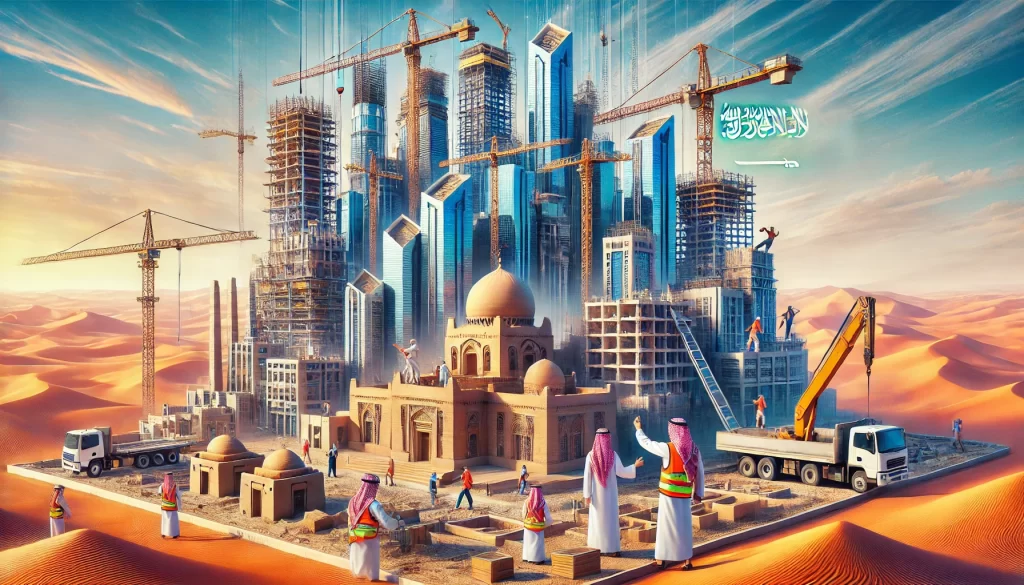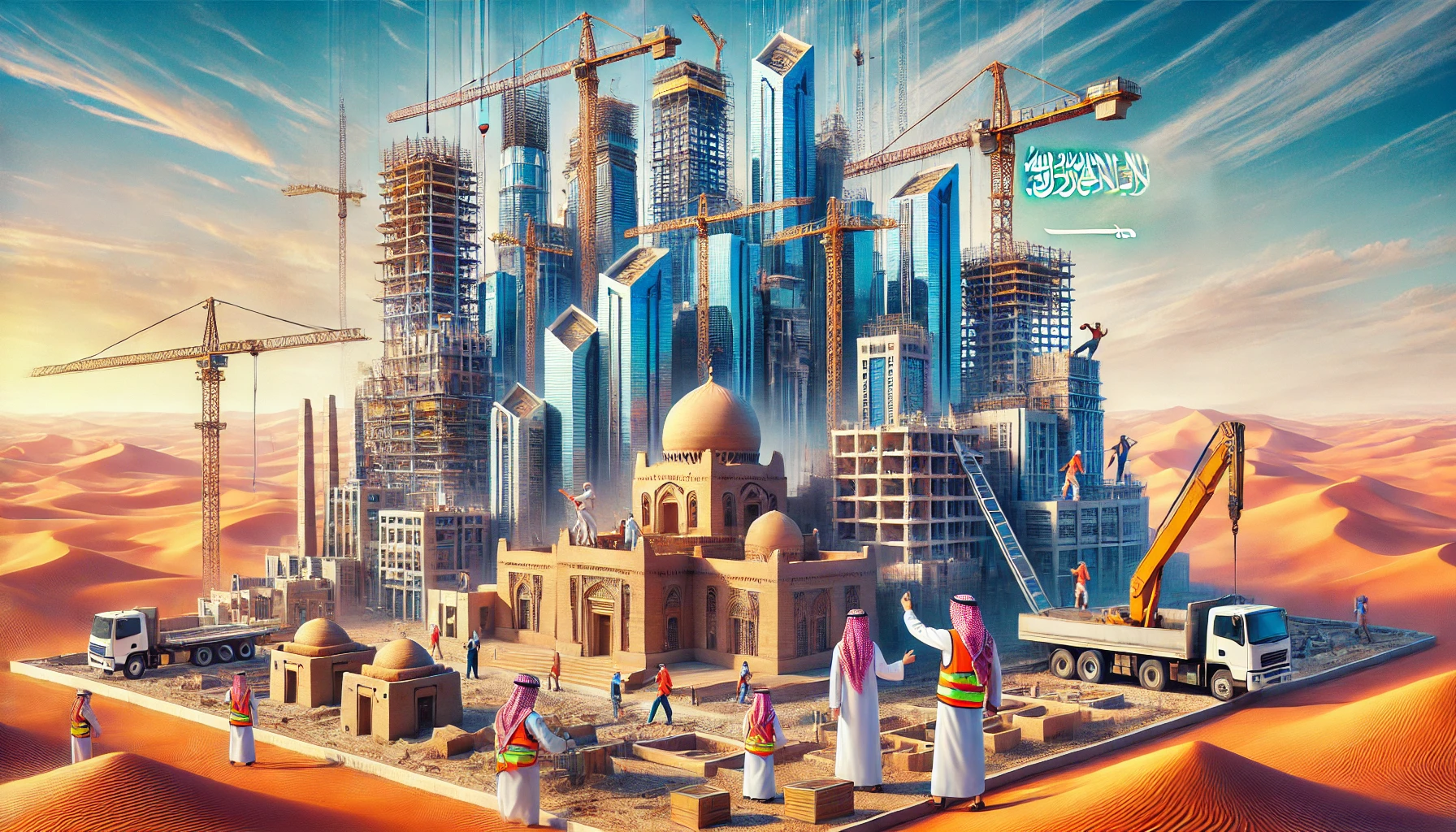
Building Activities in Saudi Arabia
Building Activities in Saudi Arabia: Transforming the Landscape
Saudi Arabia is undergoing an unprecedented transformation driven by rapid urbanization, economic diversification, and ambitious infrastructure projects. With the government’s Vision 2030 initiative at the forefront, the Kingdom is investing heavily in construction and real estate development to foster growth in various sectors. This article explores the current building activities in Saudi Arabia, highlighting key projects and the overall impact on the nation.
1. Vision 2030 and Its Impact on Construction
Launched in 2016, Vision 2030 aims to reduce the Kingdom's reliance on oil, diversify the economy, and develop public service sectors such as health, education, and tourism. As a part of this ambitious plan, significant investments are funnelled into large-scale construction projects across the nation.
Key areas of focus include:
- Housing Development: Increasing the availability of affordable housing is a priority. The Saudi Arabian government has initiated programs aimed at building thousands of new homes. The Ministry of Housing has set targets to deliver around 1.5 million residential units by 2025. (Source: Ministry of Housing-KSA)
- Transport Infrastructure: Saudi Arabia is modernizing its transport network, including roads, railways, and airports. The Riyadh Metro, with a projected cost of $23 billion, aims to ease traffic congestion and reduce pollution in the capital. (Source: Riyadh Metro)
2. Major Construction Projects
Saudi Arabia is home to several monumental construction projects that symbolize the Kingdom’s aspirations.
- NEOM: Perhaps the most ambitious of all is NEOM, a $500 billion mega-city being constructed in the Tabuk Province. Envisioned as a hub for innovation, NEOM will incorporate advanced technologies and sustainable living. It is expected to cover an area of 26,500 square kilometers and aims to attract global investment and talent. (Source: NEOM)
- The Red Sea Project: This luxury tourism development aims to promote the Kingdom as a tourist destination, with plans for over 50 hotels and numerous residential units spread across 28,000 square kilometers of pristine coastline. (Source: The Red Sea Project)
- Qiddiya: Set to become a cultural and entertainment hub, Qiddiya will include theme parks, sports facilities, and art venues, aiming to attract both domestic and international tourists. The project is a crucial part of the Kingdom's efforts to boost tourism and create job opportunities. (Source: Qiddiya)
3. Sustainability in Construction
Sustainability is increasingly becoming a priority in building activities in Saudi Arabia. The government is implementing regulations that require new developments to adhere to environmental standards, emphasizing green building practices.
- Green Building Council: The establishment of the Saudi Green Building Council aims to promote sustainable building practices and energy efficiency in the construction industry. (Source: Saudi Green Building Council)
- Renewable Energy: The Kingdom is investing heavily in renewable energy projects, particularly solar and wind, to power construction activities sustainably. The goal is to generate 58.7 GW of renewable energy by 2030. (Source: Saudi Renewable Energy)
4. The Role of Technology
Technology plays a crucial role in modern construction in Saudi Arabia. The use of Building Information Modeling (BIM) and advanced project management software is becoming standard practice among construction firms, enhancing efficiency and reducing costs.
- Smart Cities: Initiatives are underway to develop smart city concepts that leverage cutting-edge technology to improve urban living conditions. For instance, Riyadh is investing in smart traffic management systems to streamline city operations.
- Drones and Robotics: Drones are increasingly used for surveying and monitoring construction sites, while robotics enhance productivity and safety on-site.
5. Economic Impact
The construction boom in Saudi Arabia significantly contributes to the economy. As the nation implements extensive infrastructure projects, it creates thousands of jobs and stimulates industries related to construction, such as manufacturing and logistics.
- Job Creation: It is estimated that the construction sector will create over 1.5 million jobs by 2030, helping to alleviate unemployment, particularly among the youth.
- Foreign Investment: By making the country a hub for construction and industry, Saudi Arabia is attracting foreign investors. This influx of capital is vital for sustaining long-term economic growth.
6. Challenges Ahead
Despite the progress, the construction sector in Saudi Arabia faces several challenges:
- Skilled Labor Shortage: As construction activities ramp up, there is a growing need for skilled laborers. The government is addressing this by focusing on vocational training and education.
- Regulatory Hurdles: Navigating the regulatory environment can be complex. Streamlining regulations could enhance the ease of doing business in the Kingdom.
- Economic Fluctuations: The dependence on global oil prices can impact construction funding. A diversified economic base is critical for the sustainability of these projects.
Conclusion
Building activities in Saudi Arabia are at the forefront of a transformative era for the Kingdom. With ambitious projects aligned with Vision 2030, the country is on a path to diversify its economy, boost tourism, and enhance the quality of life for its citizens. While challenges remain, the commitment to innovation and sustainability will be central to the future of construction in Saudi Arabia. As the Kingdom continues to evolve, its construction landscape will remain a testament to its aspirations for progress and development.
